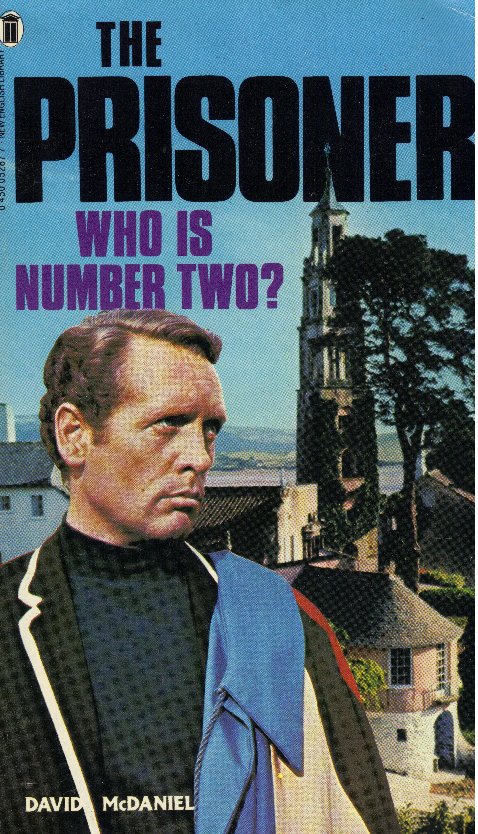
The Prisoner #2, David Mc Daniel


The second paperback in the series on the Prisoner, this one is far superior to the first effort by writer Thomas M. Disch. This paperback deals much more with the type of psychological warfare waged against the Prisoner by the Village.
The Prisoner had escaped from the Village in the last book. In this one, he is again brought back. The #1 of the last book, a grandmotherly-type individual, is revealed to have been a cyborg, and was destroyed.
The entire plot revolves around an effort by #2 to get the Prisoner to like being in the Village. First, his car, KAR 1260, is brought to him to work on. Second, a cat is psychologically conditioned to respond to the Prisoner, in hopes the Prisoner will respond positively to it. The psychological arguments between #2 and the Prisoner start early, when the Prisoner objects to wearing a number. #2 tries to argue that numbers are the easiest symbols to handle, that parents name their children and the children have no control over their names, so why not use numbers instead of names?
To help please the Prisoner, #2 allows him to build a workshop, a track for running the car on is built, an extension is built, and the Prisoner is supplied with tools, petrol, and even a computer terminal to do studies on airflow and car body design.
The Prisoner plans an escape, involving an attempt to turn his car into a boat by building a special fiberglass body that can become a hull. #2 is hoping that the Prisoner is adapting to the Village when the Prisoner accepts and even seems affectionate towards the cat. #2, of course, realizes that the Prisoner is planning an escape, but he rationalizes the situation by saying:
"...Only that currently-or recently-he is thinking about escaping. These thoughts will gradually, imperceptibly, fade over the period of another six months through procrastination to oblivion. I felt from the very beginning that if we could just keep him here and happy for a little while, his life would come to center around the Village. His life outside was not an especially happy one."
Also, in contrast to some Number Twos in the series, this one realizes the danger of forcing mental information when he says:
"The mind is still a locked box, Number 4, and opening it from the outside tends to affect the contents, even under laboratory conditions."
Number Two also notes that, after the Prisoner himself builds an extension to the car track, that the Prisoner will regard the extension, indeed the entire area of the workshop and track as his territory, and he will be more reluctant to leave the Village.
The escape attempt fails when the car motor dies wile the car/boat is trying to escape. Further, Number Two was in the car, hidden, and then apparently soon after another individual stages what amounts to a coup. The old #2 becomes #100, and he enlists the Prisoner's aid in getting him back into power.
in a discussion with the Prisoner, the old #2 claims that Number One was the founder and first administrator of the Village, that he "left", and his number was retired, and the Village has been led by a succession of Number Twos since then. A number of other interesting "facts" about the Village are brought up. of course, one never knows if they are true.
The Prisoner makes a second, and equally unsuccessful escape attempt at the end of the book. Overall, this book deals with the psychology of the Prisoner and the people who want to break him to their will and is a book worth reading.
Main index page
Main Prisoner index page
|